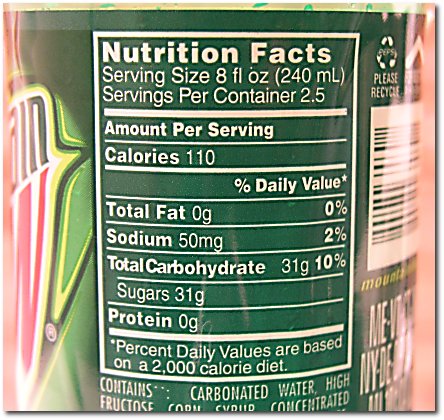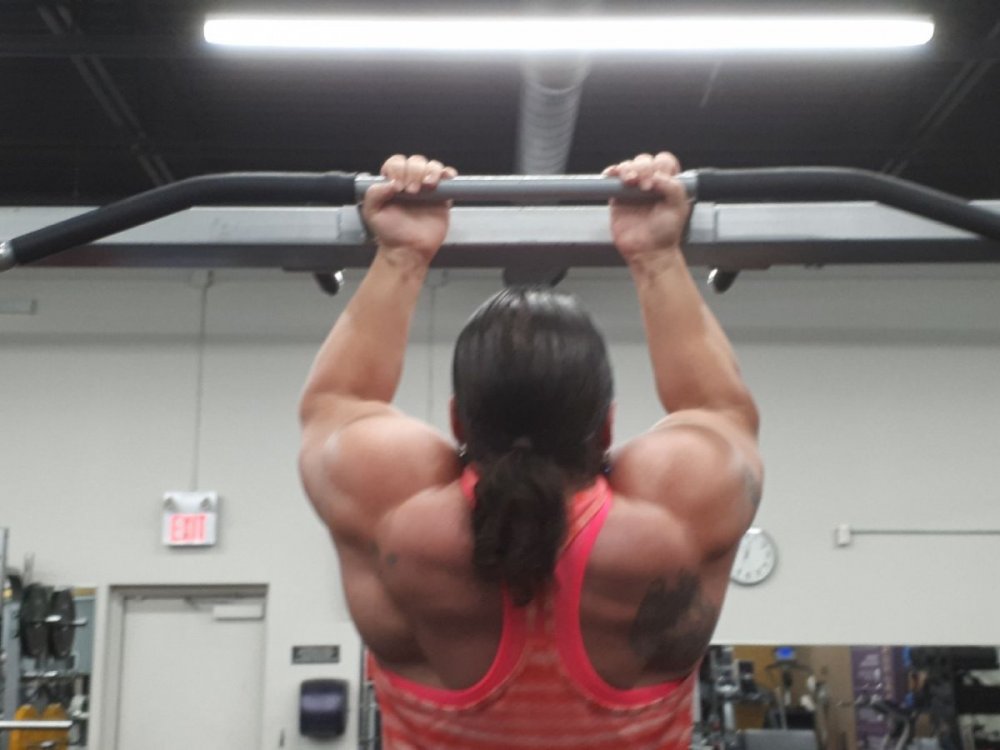-
Posts
179 -
Joined
-
Last visited
-
Days Won
5
Posts posted by MSCLMAMA
-
-
I have taken Testosterone for 4 years. Personally for me I like Test E as it stays in my body longer - some women obviously may not like that so choosing a shorter ester in the beginning would be wise. Small dosing - starting anywhere from 20mg up (taper on, monitor, taper off).
Its the same as HRT for men, we also need certain levels of natural testosterone and when that drops we feel the effects. Hormone levels really dictate your every day quality of life.
Sides are eventually inevitable but manageable at low dosing. You’ll notice facial here (every woman deals with this anyway especially post menapausal). Clitoris size change (a bonus imo). Perhaps acne. Personally I found taking test to help those things (no acne, mood level). Very personal and based off each woman. The only way to know is either try in low dosing or have a Dr admin but really they hardly have any idea about steroids and their use.
Any questions feel feel free to fire me a DM!!
-
 2
2
-
-
Thankfully out in beautiful BC it had become the “popular go to” with little research. I always choose locally made and produced, and know about the company producing it. Miss Envy is the brand I personally use! It has been a fairly amazing product for inflammation/arthritis and world extrenly well in animals too!!
-
 1
1
-
-
Black coffee. Caffeine. Ephedrine. Always suppresses my appetite!
-
 2
2
-
-
Me
in Introduction
Welcome to NL!!!
-
-
5 hours ago, mt666tm said:
Oddly enough I've been asked a couple times if I compete, and my reaction is always to say "In what?" .. then I laugh when I get the answer as I just can't see it. The stage fright would be brutal, but I suppose I could take a Xanax to get over that.
I've thought about it after the last person asked me, but then I see the time and dedication it takes and what that takes away from family life, so for that reason alone I know it's never going to happen.
I smoke a thc pen behind stage before I go out - I have fairly bad anxiety so thankfully it really helps!
-
 1
1
-
-
I bought all of the MAG grips trainer for
my home gym!!!! Love them!
-
Glad to have you here DWBO!!
-
Welcome fellow west coaster!
-
 1
1
-
-
2 hours ago, millenium girl said:
Thank you for welcoming me. Eazy57 invited me, he is a good guy. We used to interact at CM and it was fun

Welcome!! Glad to see another lady

-
 1
1
-
-
Love this!!!! Lol!!!
Big legs for me!!!! Yum


I’ve dated all body types! I prefer muscled men
 Big tree trunk legs... lol!!!
Big tree trunk legs... lol!!!
-
 2
2
-
-
-
2 hours ago, Corey5150 said:
Thanks brother!
Nice! I may see you there - pretty excited to see how a PQ show is run, it'll be a new experience thats for sure.
So a little update, training has been very solid the last few days. Food has been meh on this past weekend, my wife and I decided to replace our front stairs and build a deck... so I think I ate only about 4 or 5 times over the weekend lol oh well back to it this week.
Also, I've noticed a slight weight decrease but I'm sure its almost all water retention as the gear dose (test especially) was cut in half from our previous cycle. All in all, my minds in a good place. Just going to keep pounding away!
Yeah I just did the Van Pro and it was ran terribly!!!! They had over 500 competitors wait in the heat/sun for 3 hour line. It wasn’t CPA more so as the director of the show. TO Pro is run so smooth!!!
-
-
-
3 hours ago, Corey5150 said:
How many here have competed before? Or are looking to compete in the future?
Im curious as I constantly see the numbers of certain class’ jump, must be a few out there looking to get their feet wet!
myself, I’ve been competing for about 7 years
Last show for me was Van Pro, moved up to B.B. from WPD. Placed second. TO Pro next year maybe Ms International Wings of Strength.
-
17 hours ago, eazy57 said:
Yep, I'd have to agree with Matt. The fastest delivery I've had to date.
Pretty awesome right? Reliable for years. Quick service. Game changer!

-
 2
2
-
-
Here is a topic that although effects all of us, we hardly, if ever discuss.
It is something to be well aware of prior to going down the rabbit hole of gear use.
Most women I have come across to have serious mental health issues only made it worse when taking higher doses of certain AAS. Sadly, because there is not much information out there for women and steroid use that improper dosing generally ends up happening, and that is where problems will start to arise. Mind you, everybody is chemically different so just because Suzy was okay to take 20mg Anavar doesnt mean Polly will react the same. And trying to put boundaries onto what makes a proper dosage is kind of silly when you think about it. We can have general bench marks, but dosing for YOU and how you react is the utmost importance.
So what does this have to do with mental health? Get to the point right?
Some women it will greatly depend on, and things to consider would be;
1. What their mental health concern is (bipolar, anxiety, depression, etc)
2. What type of AAS is she using and why?
3. What are her goals? Long term goals
4. What is her mental health past
5. Have you taken any birth control or forms of hormones since puberty onwards?
6. Have you had any recent bad episodes/changes to behaviour
I have always used the analogy for women (and for men, really) let's say "if you were an asshole before starting gear, guess what? You are going to be a huge asshole on", it doesn't so much change your personality but it CAN make your personality come out greater. So if you already have depression? Well, depending on what you are taking, and how much,... it can make your depression worse. CAN. And that is all based on a person to person trial. Only you will know if your behaviour is changing (or those around you), if your reaction or behaviours are getting worse and worse you need to consider what and how much you are taking.
Anadrol ladies? Just don't. Not a great idea. The stronger the steroid and male hormone can really do some crazy bad side effects for women. And this is coming from an experienced user. The best method if you are suffering from mental health issues is to constantly evaluate your mental well being. Use the taper on method for any steroid, using the smallest amount possible for the desired result. When it comes to dosing, please feel free to look around the forum we have each AAS for women specifically with women talking about their cycles and what works for them. The best is t always start low, monitor your mental health and be aware!
Please feel free to share your experiences, thoughts, questions. We are all here to HELP one another!
*msclmama-
 2
2
-
-
ASS

-
 3
3
-
-
Great article! Explains everything you need to know to set up your macros for you!
- msclmama



HOW TO COUNT YOUR MACROS (A COMPREHENSIVE GUIDE)
Posted by Michael Vacanti

This is a comprehensive guide that details how to count macronutrients.
The information is clear and simple. It is best suited for beginners, but it could also serve as a refresher for anyone.
In this article, we will cover the following:
- What are macros?
- How to really read a nutrition label (and sift through the BS)
- Foods with and without Nutrition Facts
- Macronutrients versus Calories
- Measuring and Weighing
- FAQs
“Macros” What are they?
There are three macronutrients, or Macros:
- Proteins
- Fats
- Carbohydrates
And, technically, alcohol is a stand-in fourth
Protein

Flank steak, extra rare.
What’s it do?
Well, adequate protein intake will help build muscle and/or prevent muscle loss if you are in a calorie deficit. It controls appetite and staves off hunger better than fats or carbs as it causes you to feel full longer.
It also requires more energy than other macros for your body to digest, thus effectively burning more calories gram for gram through the digestion process.
All of these reasons make high-protein diets great for fat loss.
Where do I get it?
Meat, fish, eggs, dairy and protein shakes are all good sources.
There are many commonly cited “good” protein sources, like nuts or beans, that are actually terrible sources of protein. Only about 15-20% of the calories in these foods come from protein.
Almonds, for example, are 73% fat and only 14% protein. This is not to say you shouldn’t eat almonds, but it explains why “nuts are great protein!” is rarely coming from a credible source.
How much do I need?
It really depends on your weight, bodyfat % and goals – as low as 0.5 grams per pound of lean body mass (per day) and as high as 1.5-2 grams per pound of lean body mass.
Lean body mass is your total bodyweight minus your fat. For example, if you weigh 200 pounds and are 20% bodyfat, your lean body mass is 160 pounds, or 200 – (200*20%).
So, if you weigh 200 pounds and have 160 pounds of lean body mass, 0.5 grams per day would be 160*0.5 = 80 grams of protein.
Fat
What’s it do?
Fat is an essential nutrient that our bodies require to live; it assists in vitamin absorption, hormone regulation, brain function, and more.
Where do I get it?
Meat, fatty fish, nuts, nut butters, oils and countless other sources.
How much do I need?

Moar Fatz, Por Favor
Again, it depends on your weight, bodyfat percentage and goal – probably somewhere between 15% and 45% of your total calories. However, it can vary based on your total calories consumed and whether you are in a caloric surplus or deficit. Somewhere between 0.35-0.7g per pound of lean body mass is a good range.
Carbohydrate
What’s it do?
Carbs are stored in the liver, brain, blood and muscles as glycogen. Our bodies use carbohydrates for energy.
Where do I get it?
Fruit, vegetables, grains, many processed foods/drinks, and seemingly everything you obsessively craved if you’ve ever tried a low-carb diet.
How much do I need?
It depends. Technically, you can live on zero carbs. But, bodybuilders or endurance athletes have consumed 700+ grams per day. So, the range is pretty wide.
0.5-2 grams per pound of lean body mass is probably a decent range, again, depending on activity level, weight, bodyfat percentage and goals.
Alcohol
What does it do?
Well, it can make you cooler, funnier and more social, or possibly louder, angrier and more violent; it can make you more confident or more dumber, better or worse at sex, euphoric or depressed — all depending on who you are and how much you drink, of course.
In all seriousness, alcohol is not an essential nutrient, but it does contain calories which is why it stands in as a fourth macro.
Where do I get it?
From teh booze, duh. Beer, wine, liquor and my personal favorite, mouthwash.
How much do I need?
As much as it takes to forget your problems, comfortably interact with the opposite sex, and pump your brain with enough dopamine to make barely tolerable co-workers new BFFs in a 90 minute Happy Hour.
.
Remember, all calories come from macronutrients.
.
Vitamins, minerals, sodium, etc are micro-nutrients and do not contain calories.
.
ONLY proteins, fats, carbs and booze yield calories.
Can You Mathhszzz like him?

Let me introduce you to my man, Chunk.
If you can’t tell, Chunk obviously kills it at the maths, and he is only 10 years old. Which means that if you are older than ten, I expect you can also perform the basics: (+), (-), (x), (/).
What’s that? You can? Good. Then we can move forward.
Oh, and apparently Chunk used his arithmetic skillz, cuz look at him now:

Macros counted, good looks achieved
Each macronutrient yields a certain number of calories.
- One gram of protein yields 4 calories.
- One gram of carbohydrate yields 4 calories.
- One gram of fat yields 9 calories.
- One gram of alcohol yields 7 calories.
If you would please take a peek at the nutrition label below, we uncover the relationship between macronutrients and calories.

- Protein = 13 * 4 = 52
- Carbohydrates: 36 * 4 = 144
- Fat: 1 * 9 = 9
144+52+9 = 205 calories
Pretty close, outside of the unavoidable rounding error.
This should be easy for you. If it’s not, practice on a few items in your cupboard before we move forward.
.
Food with a Nutrition Label
When counting macros, foods with a nutrition label are easy. Just take 30 seconds to look at the label, jot down your macros and move on with your day. They’re freebies.
Lay-ups.
No, they are easier than lay-ups.
They are breakaways on a pulled goalie.
.
.
Patrik Stefan was a former first overall pick. He didn’t count his macros. Now he’s a European hockey agent.
Look at label, write down macros, don’t “blow it.”
In all seriousness, there is a lot of nonsense on a standard nutrition label that you can skip over which allows you to focus on what really matters: Proteins, Fats and Carbs.
And burying the puck.
Let’s breeze through the nutrition label.
Serving Size
The information listed on a nutrition label is for one serving. It is important to keep this in mind because many consumer products contain 2-3+ servings in a package.
For example, the macros listed on a bottle of mountain dew:
- Fat: 0g
- Protein: 0g
- Carbs: 31g

However, there are 2.5 servings in a bottle.
So, the macros for a bottle of Mountain Dew are actually:
- Fat: 0 grams (0g*2.5)
- Carbs: 78 grams (31g*2.5)
- Protein: 0 grams (0g*2.5)
Don’t get caught in the trap that gets the average, brainless consumer.
31 grams of sugar? 110 calories? That’s nothing. *Chugs bottle*
Calories
Calories provide us with energy, you probably know that. As we discussed earlier, all calories come from proteins, fats, carbs or alcohol. Micronutrients (vitamins and minerals) do not contain calories.
Should I Count It?
No.
Saturated Fat
Saturated fat has been painted as leading villain to heart disease and obesity for the past few decades. This is turning out to be not so true; in reality, a constant calorie surplus (eating more cals than you burn) fuels these diseases. Saturated fat does not.
Saturated fat has actually been shown to have some benefits: mainly, it is a precursor to testosterone production. It also improves brain functioning, nerve signaling and immunity.
Should I Count It?
Saturated fat, along with unsaturated fats (including trans fats) make up the total fat column. There is no need to count sat fat specifically.
Cholesterol
Cholesterol, like saturated fat, is produced naturally in the human body. Also like saturated fat, it has been vilified for years, but doctors and researchers alike seem to be coming around to the idea that it ain’t so bad.
Should I Count It?
Nope.
Sodium
Sodium is a mineral, so it does not contain any calories. Sodium gets a bad rap, and low-sodium diets have become increasingly popular. This is very faddish — sodium intake is irrelevant to long run bodyweight (I say long run because manipulating sodium intake can cause drastic fluctuation in short-term bodyweight).
Look, the human body needs sodium to function. So unless you have high blood pressure or another disease that requires a low sodium diet, I wouldn’t stress too much about this micronutrient.
Should I Count It?
Only if you have high blood pressure or another relevant disease.
Dietary Fiber
We discuss fiber more in the FAQs below, but for now, fiber is a carbohydrate. A carbohydrate with many benefits: it slows digestion, decreases blood cholesterol and increases satiety/fullness.
Should I Count It?
Nope, just count carbohydrates. That being said, it is important to get adequate fiber in your diet, so be sure to include plenty of fibrous veggies/fruits.
Sugar
We are going to skirt the endless is sugar bad and how much can you eat debate.
Here is what you need to know: Sugar is a carbohydrate. With regard to intake, moderation is probably best. All of your carbs should not come from sugar, but you certainly don’t need to ditch it completely.
Include a bunch of fruits and veggies in your diet, and feel free to mix in some sugary desserts as well to reach your total macros.
Should I Count It?
Nah.
% Daily Value
This is the government recommended daily intake of each nutrient based on a 2,000 calorie diet.
I would suggest completely ignoring it.
Seriously, pretend this column doesn’t exist.
It’s like everything else the government does: the food pyramid, or social security, or the outright theft of money via the federal reserve, or the manipulation of Pat Tillman’s death (friendly fire at best, probably murder) into war propaganda, OR that feeling when you realize your tax dollars are paying for two traffic cops to stand under a perfectly functional stoplight waving wands at cars…

Yeah, that’s basically % daily value.
The recommendations are wildly inaccurate and provide an unhealthy macronutrient distribution, making them a contributor to obesity.
Your parents thought they were doing the right thing feeding you 11 servings of bread per day. So did mine. Let’s forgive ‘em and move on.
Should I Count It?
Please, no. Don’t even acknowledge it.
Food without Nutrition Facts
Counting macros in food with a nutrition label is straightforward, but there will be many situations where the macros are not printed nicely on the package. Here is how to handle those times.
Fruits/Veggies
For produce, look up the nutrition facts online.
You may see a small amount of variance, but in general, each of these sites will give you accurate numbers.
Notice that you can adjust the serving size as follows:
- Generic: One medium apple
- Metric: 100 grams
- US: 1 cup
While you can eyeball the size of fruits/vegetables to get a decent estimate – small, medium or large, for a more accurate number, you should use a food scale. You might be surprised what qualifies as “small” or “large” when eyeballing.
If you have never used a food scale, I made a good video for you further down in this guide.
Meat
You can search online for meat nutrition facts just like we did for produce. Remember to weigh your meat raw, as the meat’s weight will decrease when cooked and the nutrition label is representative of raw meat.
Actually, I wrote a fairly detailed post on measuring meat macros here.
Restaurants
Restaurants are getting pretty good at publishing their nutrition data online. Fast food restaurants usually have a pdf on their website. Some companies, like Chipotle, have macro calculators where you can build your own meal.
Not all restaurants have reached this level, and it poses a problem if you are counting your macros.
I don’t have any tips or shortcuts here. Cold guessing the macros on a plate is hard. The longer you count ’em, the better you’ll get at estimating any meal with relative ease.
Until then, let me do it for you. Seriously, tag me in a pic (@ontheregimen) and I will guess your macros. It’s basically my only God-given talent, so let me use it.
Measuring Food
Now that we have all the theory down, let’s put this into practice.
Food Scale
I suggest buying a food scale. They are cheap, absurdly simple to use and a great tool for your kitchen.
How to use a food scale:
Measuring Cups & Spoons
But Mike, weighing my food on a food scale seems kinda obsessive. Can I just use measuring cups or spoons?
Yes, you certainly can.
But here’s the thing:
- The food scale isn’t obsessive. It’s actually an incredibly useful tool for your kitchen and saves you time scrubbing peanut butter and olive oil out of tablespoons.
- People are are really, really bad at measuring food by hand.
(Please excuse the dramatic audio and text)
Cliffs:
- We overfill the cup or spoon
- This leads to eating several hundred calories more than we think we are eating
- Most or all weight loss progress will be eliminated
- We get sad, frustrated and remain fat
Get a food scale and learn how to use it. At the very least, you will have it for the following situations:
- You are just starting to learn how to track macros
- You are dedicated to a specific goal (lose 20 pounds by class reunion) and want an exact macro count
- You hate doing the dishes, inaccurate measurements, and the inability to lose weight
.
Counting Macros versus Counting Calories
Alright, I get this macro stuff, but can’t I just count calories?
The truth is, yes, you will definitely lose weight if you focus solely on calories and consume fewer cals than you burn. That’s just plain old science. And if there was one thing we learned from the Twinkie study, it’s that the laws of thermodynamics (calories in – calories out) are for real.
But the quality of your weight loss will suffer if you ignore the macronutrients.
For example, inadequate protein during a calorie deficit will cause you to lose muscle. Inadequate fat intake will negatively impact many of the hormones that help your continued weight loss. And inadequate carbohydrate intake can negatively impact training performance in many instances.
So, while you can drop weight by counting calories, we aren’t just interested in dropping weight. We want a good lookin’, athletic, healthy body.
For that, counting calories ain’t enough. You need to count your macros.
Macro FAQs
Q: I often see lists of food that are “good protein sources.” For example, Chicken thighs and steak are listed, but they also contain fat. Do I just count the protein or do I count all of the macros?
Good question. The answer is that you count all of the macros even if a food is listed as a good protein or fat source. So, you would count both the protein and fat in the thigh.
A good fat, like nuts, will contain primarily fat, but it will also have some protein and carbs. You should count those too.
Q: What’s with the “free veggies” I see in some of your programs? Those have carbohydrates. Don’t I need to count those?
There are a few reasons that certain veggies (generally non-starches that have pretty high fiber) are “free”, as in, you don’t need to count the macros in them.
- The micronutrients. These foods contain tons of good vitamins and minerals (which do not yield any calories, remember?). Most people don’t get enough micros, so veggies with no macro-debt incentivizes this.
- One word, fiber. Dietary fiber, though a carbohydrate, does not yield 4 calories per gram. Soluble fiber yields ~2 calories per gram, and insoluble fiber yields 0 calories per gram. Additionally, fiber decreases absorption of protein and fat, thus reducing the calories from these sources.
- You stay full and happier. These veggies help a ton with satiation while not adding many calories at all. This makes diet adherence more manageable and increases your rate of success by decreasing binges and diet failure.
So, between micronutrients and high fiber, the benefits of these free veggies far outweigh the cost of some additional calories.
Q: Alright, I climbed the learning curve. I’m pretty good at counting macros. But it still takes up more of my time than I’d like. I don’t really care enough to do this forever.
Yes! This is perfect. You shouldn’t feel the need to count your macros forever.
Having the ability to track your macronutrients is a weapon that you want in your arsenal. It is something you want to able to use if you need to. It is absolutely not required at all times.
Currently, I make broad estimates of my daily macro intake. But if I want to get serious about a goal, I can flip the switch at any time. I am in control of changing my body.
.
Q: Okay, I’m going to count my macros. Should I keep track of my calories also?
Nope! There is really no need for you to track calories, as was previously mentioned. If you keep track of protein, fat and carbs – then whatever your goal macros are will hit your goal calories also. They are one in the same.
-
 1
1
-
Just wanted to share I am in my third week of using Proviron. As it helps the aromatization of Estrogen, especially if you use Testosterone year round, I’ve noticed huge changes! I believe estrogen was rebounding as it does after show season. I added Adex so it shuts down production. But the Proviron clearly to me is helping immediately. Of course it’s Body Tech, purple bottle
 It’s fantastic! No sides. Which is huge for the ladies. Love love love Proviron ! Maybe just as much as the Anavar lol. I am noticing a harder appearance, more cut (makes sense if it’s helpimg any aromatization from my Test). Happy girl. Looking tight! Happy with this and will be using it as a staple in my contest prep!
It’s fantastic! No sides. Which is huge for the ladies. Love love love Proviron ! Maybe just as much as the Anavar lol. I am noticing a harder appearance, more cut (makes sense if it’s helpimg any aromatization from my Test). Happy girl. Looking tight! Happy with this and will be using it as a staple in my contest prep!
If you haven’t tried, it’s a great product to add into your cycle!
*maclmama

-
Hey
in Introduction
Welcome to Northern!!! Don’t be shy! Post and tell your buddies to come on down

-
On 9/20/2018 at 11:44 AM, Corey5150 said:
Hey everyone!
I thought I'd start a new log detailing some of my offseason progress leading into the Toronto Pro Qualifier at the end of 2019! A little bit about myself, I'm 28 years old - current weight is about 255lbs, my height is 5'9 and I've competed in about 6 shows so far. My goal for this offseason is to hopefully get up to somewhere around 270lbs or so and not be too sloppy LOL I don't have a lofty goal of a pro card or anything but I do want to stand up with the other heavyweights and look like I belong on the national stage.
I hired a coach for this offseason, Nick Trigili - some people love him some hate him lol I will say my experience with him has been very good. Very responsive, very insightful and overall his honesty is what I really appreciate. So he looks after my diet, training and supplementation. Just so its fair I won't be posting too much of any specifics - but I will post the overall idea we use.So currently for gear what I've been using has been,
Test E - 750/week
NPP - 300/Week
EQ - 450/Week
However this is about to change, we'll be keeping the same compounds but ramping up in dosages into what we discussed as starting to get "aggressive". I'll be honest as well, I haven't been hitting all three shots per week, so I probably haven't totally been hitting those numbers.ALSO, all gear that I will be using (as well as GH) will be by BODYTECH. Its a brand I experimented with through my last prep, and enjoyed so I will be continuing throughout this offseason and into my prep as well.
Peptide wise we finished using 1 method of insulin last week, and changed it up with the new plan - we'll be using it 3 times per day. Another thing we'll be introducing as well will be HGH at 6iu per day (split into 3 doses). I'm probably most excited/hesitant for this aspect as I've only used GH once and it was years ago so we'll see what happens!
Diet consists of 3 separate "meal plans" 1 for larger muscle group days (Chest, back and legs - these are also the insulin days), another for arms and delts and another for rest days.Training - nothing crazy, although we're starting to ramp up the volume and I'll update this as I go.
So TODAY I trained early and hit Quads and Hamstrings - this is an area I need to bring up, especially hamstrings, so I try to bring a lot of intensity. I've been focusing much more on contracting the muscles then simply moving weight (which I use to do a lot). Got a great pump, did lots of hacks and front squats as well as 15 sets of hamstring work.
I am training for the TO as well!

-
 1
1
-
-
2 hours ago, Joliter said:
Thank you
 Enjoy the site!!
Enjoy the site!!





_7898.thumb.jpeg.1e252dcc1e5b70a53e4af5a7610085cb.jpeg)


Appetite while on aas
in Bodybuilding and Training Talk
Posted
I’m sure some of the men will chime in here to help a lad out. Any advice?